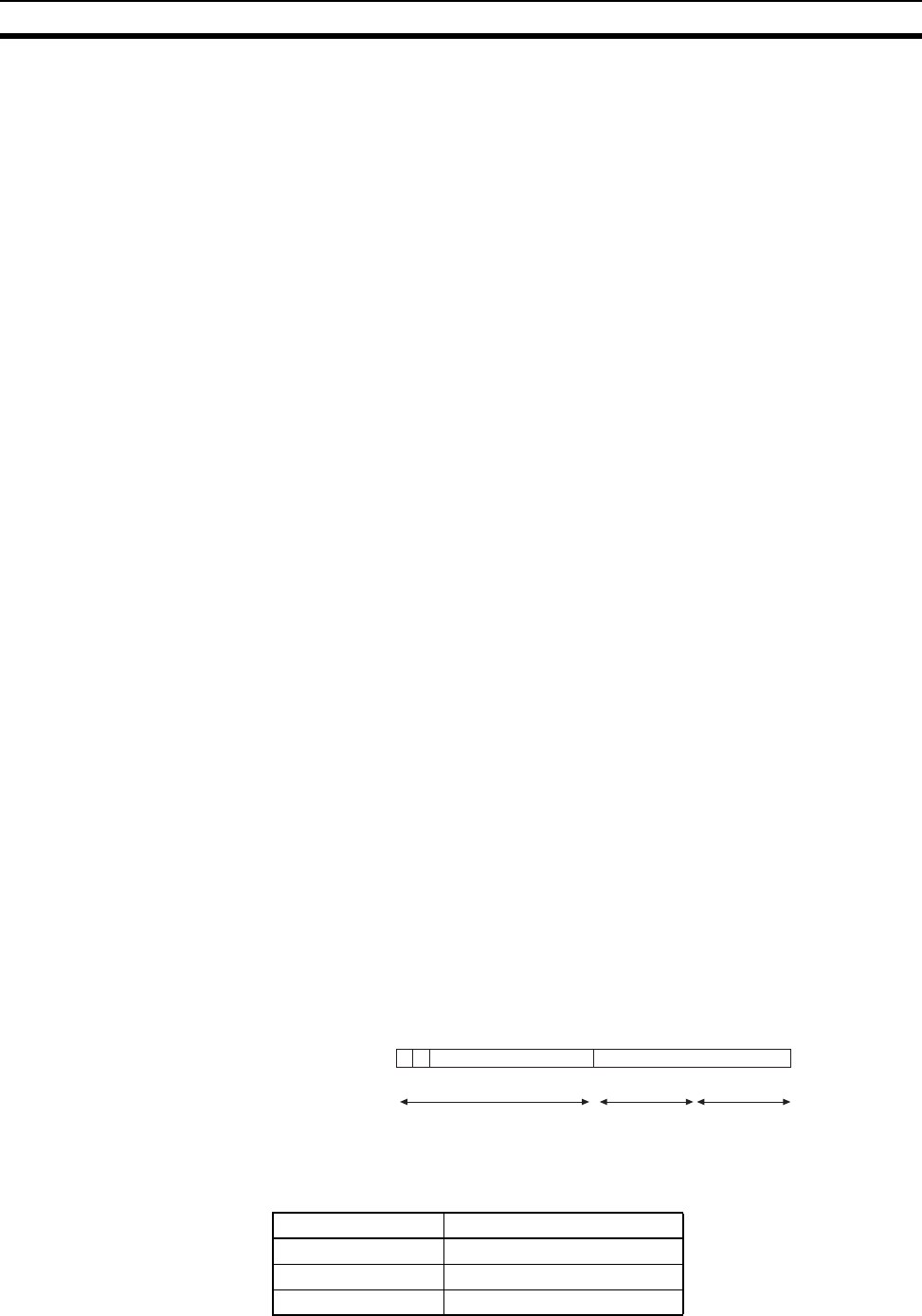
93
IP Addresses Section 5-1
5-1-3 EtherNet/IP Unit IP Address Settings
An IP address must be set even for the EtherNet/IP Unit or built-in EtherNet/IP
port before Ethernet communications can proceed. Use one of the following
methods to set the IP address of the EtherNet/IP Unit or built-in EtherNet/IP
port. Either use the default IP address setting, use a Programming Device to
set a particular IP address in the DM Area words (CS/CJ Series only) allo-
cated to the Unit as a CPU Bus Unit, or set a particular IP address in the Eth-
erNet/IP Unit or built-in EtherNet/IP port.
• If you want to connect the EtherNet/IP Unit or built-in EtherNet/IP port
immediately, the default IP address is 192.168.250.Node_address. (The
node address is set with the Node Address Setting Switches on the front
of the EtherNet/IP Unit or CPU Unit.)
• If you want to set a particular IP address and store that local IP address in
the CPU Unit, set it with the CPU Unit’s allocated DM Area words (CS/CJ
Series only).
• If you want to set a particular IP address and store that local IP address in
the EtherNet/IP Unit or CPU UNit, set the IP address in the TCP/IP set-
tings of the Unit Setup from the CX-Programmer.
• If you want to set a particular IP address and obtain the IP address auto-
matically from the BOOTP server, TCP/IP settings of the Unit Setup from
the CX-Programmer. For details, refer to 3-8 TCP/IP and Link Settings.
5-1-4 Subnet Masks
Operation and management of a network can become very difficult if too
many nodes are connected on a single network. In such a case it can be help-
ful to configure the system so that a single network is divided up into several
subnetworks. This can be done by using part of the host number as a subnet
number. Internally the network can be treated as a number of subnetworks,
but from the outside it acts as a single network and uses only a single Net-
work ID.
To establish subnetworks, the Host ID in the IP address is divided into a Sub-
net ID and a Host ID by using a setting called the Subnet Mask. The Subnet
Mask indicates which part of the Host ID is to be used as the Subnet ID. All
bits in the Subnet Mask that correspond to the bits in the IP address used
either as the Network ID or Subnet ID are set to “1,” and the remaining bits,
which correspond to the bits in the IP address actually used for the Host ID,
are set to “0.”
The following example shows the Subnet Mask for an 8-bit Subnet ID used in
a class-B IP address.
Set the same Subnet Mask value for all of the nodes on that subnetwork. If no
subnetworks are used, there is no need to set Subnet Masks. In that case, the
following Subnet Mask values will be used depending on the IP address class.
Class Subnet Mask value
Class A 255.0.0.0
Class B 255.255.0.0
Class C 255.255.255.0
Bit 31 15 0
Class B 1 0
Subnet mask 1111111111111111 1111111100000000 = FF FF FF 00
Network ID (14 bits)
Host ID (16 bits)
Network number
Subnet number Host number


















